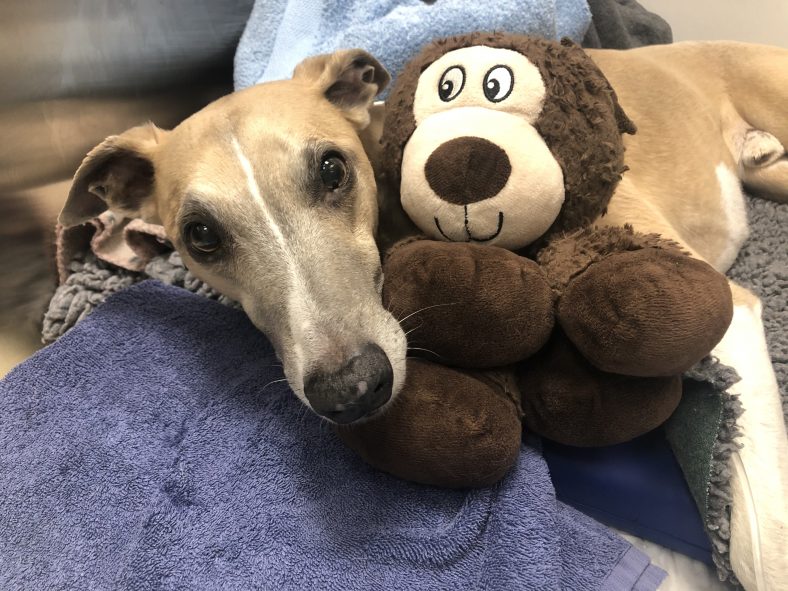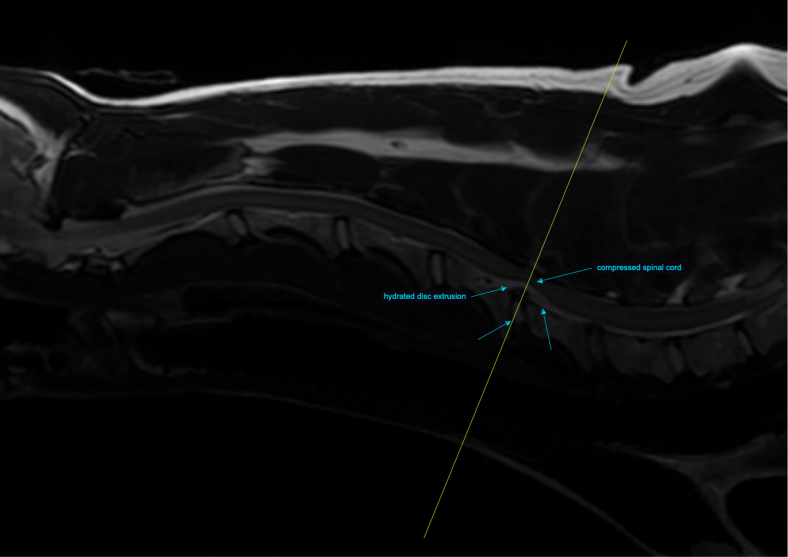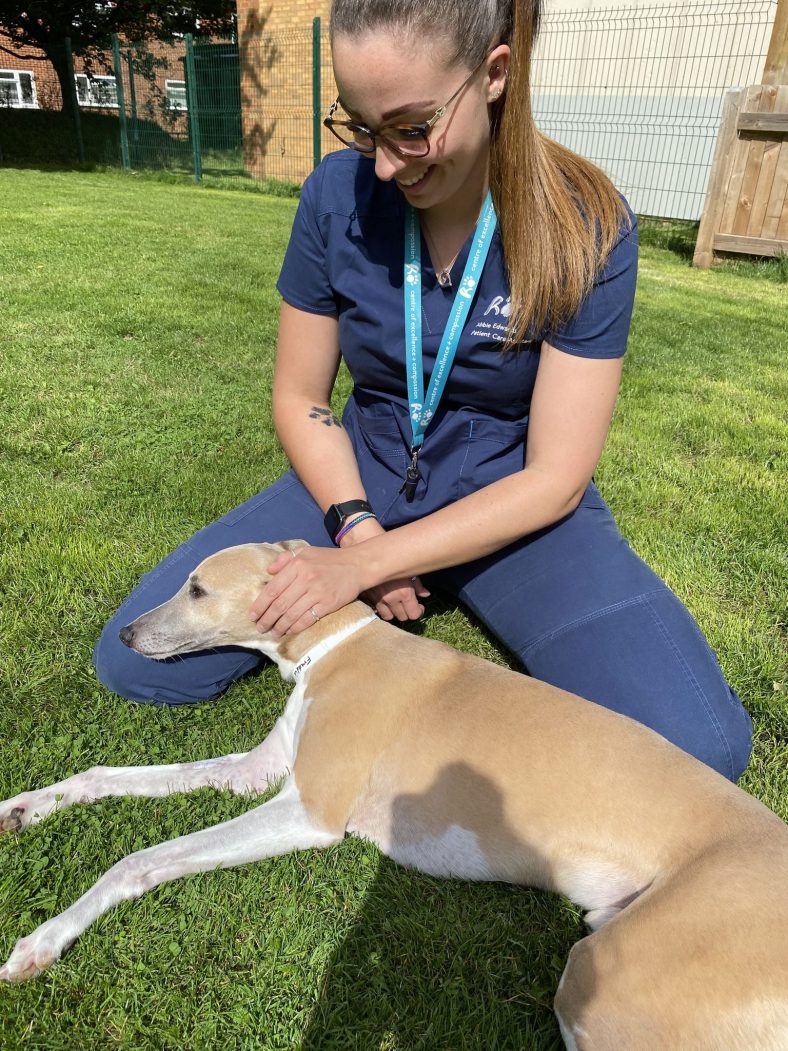Our Community
Freddie’s story

Freddie resting in our Dog Ward.
After a walk one day, Freddie seemed to be in pain when he moved his neck. He began struggling to use his front legs properly and so his carers rushed him to the vets.
Over the next couple of days, his symptoms worsened. He couldn’t stand or walk unaided.
Freddie’s primary care vet urgently referred him to our Neurology team for further assessment, investigations and treatment. Chris, one of our Neurologists, evaluated Freddie and suspected a cervical spinal cord problem. An MRI scan was then performed under the care of our Neurology and Diagnostic Imaging teams to collect images of Freddie’s spine. This advanced imaging revealed spinal cord bruising and a hydrated compressive slipped disc within his cervical spine (that’s the highest section of the spine, in the neck).
Intervertebral discs link the spine’s vertebrae together and help keep the spine aligned and flexible. The outer layer of the disc can sometimes rupture during exercise or because it has degenerated. Its content spills into the spinal canal and hits the spinal cord presumably at a high speed. This bruises the spinal cord (with or without compression) and intercepts the messages for the brain which tell the legs to move.

An MRI image of Freddie’s spine, showing the disc extrusion and compression within the spinal cord.
There are two forms of medical management when it comes to Freddie’s condition: conservative (non-surgical) and surgical. Most dogs with a hydrated compressive slipped disc respond well to conservative management; they regain their ability to move their legs and walk without having to undergo surgery. However, some dogs continue deteriorating and require surgical decompression of the spinal cord and removal of the slipped disc.
The team decided to try and manage Freddie’s symptoms conservatively first. He was given specialist round-the-clock care to reduce the pain and inflammation in his spinal cord. Initially, he needed lots of rest to give him time to recover, and then our Physiotherapist, Kim, started Freddie on a gradually increasing exercise plan. He began to show signs of improvement and even began to walk a little.

Freddie catching some rays in our dog garden with Patient Care Assistant, Abbie.
Unfortunately for Freddie, he suddenly deteriorated again and lost the use of all four legs. A repeat MRI scan showed that the bruising and compression on his spinal cord had gotten worse.
Spinal decompression surgery was therefore required. Our Neurologist, Chris, created a small window around the site of the slipped disc using a surgical drill. With this access to Freddie’s cervical spinal canal, Chris was able to gently tease out the spilt material. This allows the swollen spinal cord more space to heal, giving better hope for a full recovery.
The surgery was a success and Freddie spent the next few days recovering back in our Dog Ward. He also began his second physiotherapy and rehabilitation journey with Kim.
Freddie showed gradual signs of neurological improvement during his post-operative stay and recovered uneventfully. He was fitted with a wheelchair to help aid his recovery and then reunited with his adoring family, three weeks after he was first referred to us. Hooray!
Chris recently saw Freddie for a one-month post-op check-up; he has significantly improved! His limbs are growing increasingly stronger, and with continued physiotherapy and rehabilitation, we expect to see even greater improvement over the coming weeks and months. Check out the video below of Freddie leaving the hospital after his most recent physio session. Yay Freddie!
